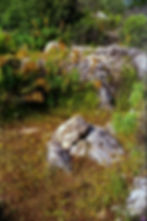Testudo ibera in Turkey
- tortoisetrust
- Feb 17, 2024
- 3 min read

For those interested in the general ecology, physical characteristics and behaviours of Testudo (graeca) ibera - of which more in a minute - here's some images of this tortoise in the wild, in Turkey. These were taken in the general vicinity of Fethiye and Oludeniz, located along the coastal zone. The vegetation seen here is typical of spring, April/May. As the summer heat increases, fresh green vegetation decreases and tortoises will often enter a state of aestivation, burying under large rocks, etc., to escape the heat, lack of water, and reduction in availability of food. The exact amount to which they do this is heavily influenced by local climatic factors, however. Proximity to the moderating coastal influence and especially altitude, where it can be substantially cooler. The appearance of ibera is very distinctive, and really very different from say, North African T. graeca graeca. So much so, that we have long believed that there is a very good case for recognising them as a species complex in their own right. Not only do they differ in appearance, but also in behaviour. They are, in essence, quite a lot more aggressive than North African graeca, and are capable of inflicting quite serious bite injuries and especially impact injuries from extremely vigorous shell 'ramming' during both courtship and combat. This is one reason why it is extremely risky to mix ibera with other species. The injuries that the other species can sustain can be life-threatening. Another reason is that ibera carry and have different resistances to, a variety of pathogens than do Testudo graeca graeca and other North African species (e.g., Tortoise Picornavirus (ToPV) commonly known as Virus "X"). On both grounds then, mixing ibera with other species is highly inadvisable.

The habitat is thorny and rocky. One key plant species seen frequently and used by tortoises as a retreat is Quercus coccifera (Kermes oak) - this is very thorny indeed, and no doubt discourages predators as well as providing shade. One effect of living in such an 'abrasive' landscape is that many tortoises show evidence of various shell injuries from impacts, and also that wear levels upon the outer keratin scutes are clearly significant. It is also notable that in particularly moist habitats, such as those bordering ponds or lakes, some tortoises also display clear evidence of fungal infections of the keratin layer. This is rarely seen in tortoises that live in more arid areas.



Some younger examples.
Tortoise habitats are used extensively by local goat herders, and in such areas the tortoises can carry a very high load of goat ticks. These are also a potential vector for blood-born diseases and in many cases they do result in local skin and shell infections. Ticks not only attach themselves to soft tissue around the head and limbs, but also very often to new-growth keratin between the scutes. Evidence of such past tick attachments is typically visible as small white necrotic (dead) areas of exposed bone tissue at the infection site. Over time, these usually fall out due to 'wear and tear', but this can take years.

Some of these tortoises are of considerable size (28cm is not unusual) and a few exceeded 30cm. In addition, very worn specimens of advanced age were quite frequently observed.



Tortoise with evidence of a fungal infection. Found in a low lying, moister area.

